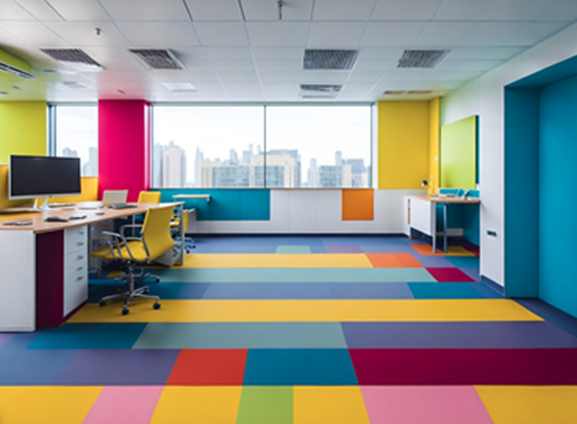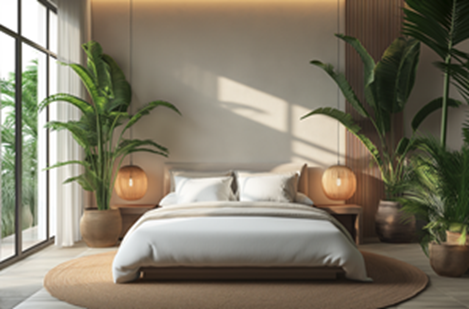Article #47: Understanding the Three-Point Estimate in Project Management
By: Bode Thomas Adeyemi
Headings in this article:
- Personal Reflection on Three-Point Estimate
- Introduction to the Three-Point Estimate
- Key Concepts of the Three-Point Estimate
- The Three Estimates Explained
- Benefits of the Three-Point Estimate
- Steps to Implement the Three-Point Estimate
- Limitations of the Three-Point Estimate
- Best Practices for Accurate Estimates
- Conclusion
Personal Reflection on the Three-Point Estimate
As I explore the Three-Point Estimate in project management, I find it an invaluable tool that significantly enhances my approach to forecasting costs and timelines. Previously, I often relied on simple, single-point estimates, which were not always accurate. By embracing the Three-Point Estimate method, I can consider multiple scenarios—optimistic, pessimistic, and most likely—which allows me to present a more nuanced view of potential project outcomes. This comprehensive approach has fostered better communication with stakeholders, as it not only highlights uncertainties but also encourages deeper discussions about risk management and project assumptions.
Through my experience using the Three-Point Estimate, I've come to appreciate the importance of collaboration in the estimation process. Involving team members provides diverse perspectives that enrich the overall quality of my estimates. By discussing potential risks and their implications collectively, I create a stronger commitment to project goals and foster a more unified approach to overcoming challenges. This inclusive method leverages the expertise of my colleagues and enhances team morale, as everyone feels they have a stake in the project’s success.
However, my journey with the Three-Point Estimate has not been without its challenges. Identifying both optimistic and pessimistic scenarios can be difficult, especially in projects with high uncertainty. I have often found it necessary to analyze historical data and seek insights from experienced team members to inform my estimates. This experience has underscored the importance of continuous learning, as adapting my approach based on past projects significantly improves my future estimates. I am committed to integrating the Three-Point Estimate more thoroughly into my project management practice, as it empowers me to manage uncertainties effectively while striving for successful outcomes.
Introduction to the Three-Point Estimate
In the realm of project management, precise estimation is foundational to planning and executing projects effectively. The Three-Point Estimate is a widely used technique that enhances the accuracy of time and resource estimates by incorporating a range of potential outcomes. This method recognizes that uncertainty and variability influence project timelines and resource allocation.
The Three-Point Estimate involves calculating three distinct values for each project activity:
1. Optimistic Estimate (O): The best-case scenario that assumes ideal conditions with no delays or issues.
2. Most Likely Estimate (M): The average scenario that reflects typical conditions and challenges likely to be faced during the project.
3. Pessimistic Estimate (P): The worst-case scenario that anticipates all possible problems that could arise, causing delays or additional resource requirements.
By combining these estimates, project managers can generate a more reliable overall estimate that takes into account the potential risks and uncertainties inherent in project execution. This approach not only aids in developing realistic timelines and budgets but also fosters better communication and expectation management with stakeholders. Understanding the Three-Point Estimate is crucial for anyone looking to enhance their project management skills and deliver successful outcomes.
Key Concepts of the Three-Point Estimate
The Three-Point Estimate technique is built around the principle of accounting for uncertainty in project management. By capturing the range of possible outcomes, this method provides a more nuanced view of potential timeframes and resource needs for project tasks. Some key concepts of the Three-Point Estimate are:
1. Triangulation of Estimates: The essence of the Three-Point Estimate lies in its triadic approach—collating three distinct estimates (optimistic, most likely, and pessimistic) helps to triangulate a more accurate average estimate. This method reduces bias that might arise from relying on a single estimate.
2. Optimistic Estimate (O): This estimate reflects the best-case scenario, where everything proceeds as planned with minimal issues or delays. It is critical for setting ambitious targets, but it should be approached with caution to avoid overly optimistic planning.
3. Most Likely Estimate (M): The most realistic estimate that accounts for common risks, challenges, and day-to-day issues that can affect project execution. This estimate serves as the cornerstone for the overall calculation and is often the most heavily weighted.
4. Pessimistic Estimate (P): This scenario represents the worst-case situation, where potential problems lead to significant delays or resource escalation. Including a pessimistic view helps prepare project managers for worst-case contingencies and provides a safety net in planning.
5. Expected Value Calculation: The Three-Point Estimate culminates in calculating an expected value that provides a single, weighted average estimate. This is typically done using either the triangular distribution method or the PERT formula, where the most likely estimate is given more weight compared to the optimistic and pessimistic estimates.
6. Risk Analysis and Management: By explicitly acknowledging uncertainty through the Three-Point Estimate, project managers can better understand risks associated with project tasks. This insight enables more robust risk management strategies, allowing teams to devise contingency plans and allocate resources more effectively.
7. Collaborative Input: The estimates should ideally be derived from a collaborative approach, where inputs from various team members with different expertise and perspectives are considered. This collective insight enhances the accuracy and reliability of the estimates.
8. Continuous Review and Adjustment: Estimates should be revisited and adjusted as project details evolve and new information becomes available. The dynamic nature of projects necessitates a flexible approach to estimation to ensure ongoing accuracy throughout the project lifecycle.
The Three Estimates Explained
The Three-Point Estimate method is a versatile technique used in project management to account for uncertainty and variability in estimating the duration and resources of tasks. By generating three distinct estimates for each task—optimistic, most likely, and pessimistic—project managers can create a more balanced and realistic view of what the project will entail. Below, I delve into each of the three estimates in detail:
1. Optimistic Estimate (O):
The optimistic estimate reflects the best-case scenario for a given task. It considers ideal circumstances whereby everything goes as planned, with no unexpected challenges or delays.
This estimate is significant because it helps project managers envision a scenario where maximum efficiency is achieved, allowing for the completion of tasks in the shortest possible time. However, excessive reliance on optimistic estimates can lead to unrealistic planning and overcommitment.
2. Most Likely Estimate (M):
The most likely estimate provides a realistic expectation regarding the duration or resources needed for a task based on the conditions that are anticipated. It takes into account the usual challenges and uncertainties that can arise during project execution.
This estimate is typically based on historical data, expert judgment, and experience. It serves as the foundational estimate and is often given the most weight in calculations for the expected duration or resource needs. It sets a balanced, achievable target that guides progress monitoring and reporting.
3. Pessimistic Estimate (P):
The pessimistic estimate represents the worst-case scenario, factoring in all potential risks and issues that could impede progress or inflate resource requirements.
By identifying the possible obstacles and challenges, this estimate helps project managers prepare for adverse events. It serves as a safeguard against overly optimistic projections and contributes to more cautious and informed decision-making.
Benefits of the Three-Point Estimate
The Three-Point Estimate method offers several advantages in project management, making it a valuable technique for project planners and managers. Here are some of the key benefits:
1. Increased Accuracy: By incorporating three distinct scenarios—optimistic, most likely, and pessimistic—the Three-Point Estimate provides a more comprehensive view of potential project outcomes. This approach helps to mitigate the risks associated with relying solely on a single estimate, leading to improved overall accuracy in project timelines and resource allocation.
2. Enhanced Risk Management: The method explicitly acknowledges uncertainty and potential risks. By considering best-case and worst-case scenarios, project managers can better identify potential pitfalls and develop contingency plans. This proactive approach to risk management enables teams to respond effectively to unexpected challenges throughout the project lifecycle.
3. Improved Stakeholder Communication: The Three-Point Estimate allows project managers to present a range of possibilities to stakeholders, rather than a single number. This transparency fosters trust and better communication, as stakeholders gain a clearer understanding of the uncertainties involved. It can also help in setting realistic expectations regarding project timelines and deliverables.
4. Facilitates Better Decision-Making: With a range of estimates at hand, project managers can make more informed decisions when allocating resources, prioritizing tasks, and scheduling work. The data gathered through this method serves as a foundation for discussions among stakeholders regarding project viability and resource needs.
5. Supports Continuous Improvement: Using the Three-Point Estimate encourages the collection and analysis of historical data from previous projects. This practice not only helps in refining future estimates but also fosters an environment of continuous learning and improvement within project teams.
6. Adaptability to Various Project Types: The Three-Point Estimate can be applied across different types of projects and industries, making it a versatile tool. Whether in construction, software development, or research, this technique provides valuable insights applicable to varied contexts.
7. Encourages Team Collaboration: Involving team members in developing the estimates fosters collaboration and encourages diverse perspectives. This collective input can enrich the estimation process and lead to better outcomes, as team members from different backgrounds bring unique insights to the table.
Steps to Implement the Three-Point Estimate
Implementing the Three-Point Estimate method involves a systematic approach to gathering input, analyzing data, and calculating estimates. Below are the key steps to effectively apply this technique:
1. Define the Task or Activity: Begin by clearly defining the task or activity for which you need to create estimates. Ensure that all team members understand the scope of the work involved.
2. Gather Team Input: Assemble a team of stakeholders and subject matter experts who can provide valuable insights into the task. Collaborate through brainstorming sessions or workshops to discuss potential scenarios that might affect the duration or resources required.
3. Develop Estimates: Facilitate discussions to develop three different estimates for the task:
Optimistic Estimate (O): Estimate the best-case scenario where everything proceeds smoothly without any obstacles.
Most Likely Estimate (M): Estimate what is most realistic, taking into account common challenges and team performance.
Pessimistic Estimate (P): Estimate the worst-case scenario, considering potential risks and issues that could delay progress.
4. Use Historical Data: Consult historical data from previous projects or similar activities to inform your estimates. This can provide a more realistic basis for the optimistic, most likely, and pessimistic values.
5. Calculation of the Expected Value: Once the three estimates are established, project managers can calculate the overall expected value using a weighted average approach. A commonly used formula for this calculation is:
E = [O + 4M + P]/6
The most likely estimate (M) is given greater weight (four times) than the optimistic and pessimistic estimates. This ensures that the calculation leans towards a realistic expectation based on the typical scenario while still recognizing the extremes of best and worst cases. In this formula:
- E: represents the estimated value or expected value of a task.
- O: is the optimistic estimate (best-case scenario).
- M: is the most likely estimate (average or expected scenario).
- P: is the pessimistic estimate (worst-case scenario).
6. Review and Adjust: Regularly review the estimates with the team and adjust them as necessary throughout the project lifecycle. New information or changes in scope may require updates to the estimates, ensuring they remain relevant and accurate.
7. Communicate the Estimates: Present the three-point estimates and the expected values to stakeholders and ensure they understand the associated uncertainties. Maintaining transparency fosters trust and better project buy-in.
8. Monitor Progress: As the project progresses, continuously monitor the actual performance against the estimates. Utilize this data to refine future estimations and to inform stakeholders of any changes to project timelines and deliverables.
9. Document Lessons Learned: After the project’s completion, document what worked well and what didn’t regarding the estimation process. Analyzing successes and challenges can lead to improvements in future applications of the Three-Point Estimate.
Limitations of the Three-Point Estimate
While the Three-Point Estimate method is a valuable tool in project management, it is not without its limitations. Understanding these drawbacks is essential for project managers to mitigate their impact effectively. Here are some key limitations of the Three-Point Estimate:
1. Subjectivity in Estimates: One of the primary limitations is the inherent subjectivity in developing the optimistic, most likely, and pessimistic estimates. The estimates rely heavily on the knowledge, experience, and judgment of the individuals involved, which can lead to biased or inconsistent results. Different team members may have different interpretations of what constitutes optimistic or pessimistic scenarios.
2. Complexity in Diverse Projects: For highly complex projects, establishing three distinct estimates for every task can become cumbersome and time-consuming. This complexity can lead to analysis paralysis, where project teams spend too much time estimating instead of executing.
3. Overemphasis on Extremes: The method emphasizes both optimistic and pessimistic scenarios, which can lead to a tendency to focus excessively on the extreme cases. As a result, project managers might mitigate risks based on worst-case scenarios without proportional consideration of normal and probable outcomes.
4. Limited Historical Data: The effectiveness of the Three-Point Estimate often depends on the availability of historical data to inform the estimates. In projects or fields where there is little historical context available, developing accurate estimates may prove challenging and potentially unreliable.
5. Inability to Predict Unforeseen Changes: The Three-Point Estimate assumes that risks and uncertainties can be adequately captured in the optimistic, most likely, and pessimistic estimates. However, unforeseen events, such as economic shifts, regulatory changes, or technological advances, may have significant impacts that are not accounted for within this framework.
6. Diminished Effectiveness in Agile Environments: While the Three-Point Estimate can be adapted for Agile methodologies, its traditional form may not mesh well with the iterative nature of Agile projects. In agile environments, requirements and tasks may evolve rapidly, making estimates quickly outdated.
7. Calculation Limits: The mathematical processes used to synthesize the three estimates into an expected value can sometimes oversimplify the complexities of project tasks. The averaging approach can obscure significant fluctuations in potential outcomes, leading to an oversimplified view of the project's uncertainty.
8. Dependence on Team Dynamics: Effective use of the Three-Point Estimate relies on collaboration and open communication within teams. A lack of trust or poor team dynamics can result in less accurate estimates, as team members may withhold their true opinions or fail to engage in constructive discussions.
Best Practices for Accurate Estimates
Accurate project estimation is crucial for successful project management, as it directly affects scheduling, budgeting, and resource allocation. To improve the reliability of estimates, project managers can adopt several best practices. Here are some key recommendations:
1. Involve the Right Stakeholders: Engage team members and stakeholders who have relevant experience and expertise in the areas being estimated. Collaboration can lead to a more comprehensive understanding of the tasks ahead and produce more accurate estimates.
2. Utilize Historical Data: Draw on data from previous projects that are similar in scope and complexity. Historical data can provide insights into how long tasks actually took, what resources were needed, and what challenges were commonly faced.
3. Define Clear Requirements: Ensure project requirements are well-defined and understood before estimating. Ambiguity can lead to inaccurate estimates, as unclear requirements may result in underestimating the complexity of tasks.
4. Break Down Tasks: Decompose larger tasks or milestones into smaller, more manageable components. This granularity makes it easier to apply estimation techniques effectively and identify any potential risks or uncertainties.
5. Use Multiple Estimation Techniques: Combine several estimation methods, such as Expert Judgment, Analogous Estimating, Parametric Estimating, and the Three-Point Estimate. This multi-faceted approach helps cross-verify results and enhance accuracy.
6. Consider Uncertainties and Risks: Acknowledge uncertainties by identifying potential risks that could affect the estimates. Using techniques such as the Three-Point Estimate offers a way to quantify uncertainty and develop a range of possible outcomes.
7. Review and Revise Estimates: Regularly revisit and update estimates as new information becomes available or project requirements evolve. Maintaining flexibility in estimates allows teams to adapt to changing circumstances.
8. Conduct Team Reviews: Implement a review process where estimates are challenged and validated by peers or other stakeholders. Using techniques like Planning Poker or Delphi technique can promote dialogue and uncover overlooked factors.
9. Document Assumptions and Rationale: Clearly document the assumptions made during the estimation process and the rationale behind each estimate. This documentation can help in revisiting estimates later and provides transparency for stakeholders.
10. Monitor Progress Against Estimates: After project execution begins, track actual performance against estimates continuously. This monitoring enables early identification of variances, allowing for timely corrective actions to keep the project on track.
11. Continuous Learning and Improvement: After project completion, conduct a retrospective to analyze estimation accuracy compared to actual outcomes. Gather lessons learned and refine estimation processes for future projects to continuously improve accuracy.
Conclusion
The Three-Point Estimate method is a valuable tool in project management that provides a structured approach to estimating timelines, budgets, and resource allocations. By considering optimistic, most likely, and pessimistic scenarios, project managers can enhance the accuracy of their estimates and improve overall project planning. The benefits of this technique, including better risk management and clearer communication with stakeholders, are crucial for navigating the uncertainties inherent in any project. Nonetheless, it is important to recognize its limitations, such as the potential for subjectivity and complexity when applied to highly intricate projects.
To optimize the effectiveness of the Three-Point Estimate, project teams should adopt best practices such as involving relevant stakeholders, utilizing historical data, and regularly reviewing and updating estimates as new information arises. By following these guidelines, project managers can significantly improve the reliability of their estimations, leading to more successful project outcomes. Ultimately, an accurate estimation process is essential for effective project management, influencing every aspect of planning and execution while fostering a culture of collaboration and continuous improvement.
What are your thoughts on this article? Share your opinions! If you agree, show your support by liking this article. If not, please let me know your reasons; your feedback is valuable.
Bibliography
- Kerzner, H. (2025). Project Management: A Systems Approach to Planning, Scheduling, and Controlling. John Wiley & Sons.
- PMI (2017). A Guide to the Project Management Body of Knowledge (PMBOK® Guide). Project Management Institute.
- Schwalbe, K. (2016). Information Technology Project Management. Cengage Learning.
- Verzuh, E. (2015). The Fast Forward MBA in Project Management, John Wiley & Sons.
- Wysocki, K. (2011). Effective Project Management: Traditional, Agile, Extreme. John Wiley & Sons.
















